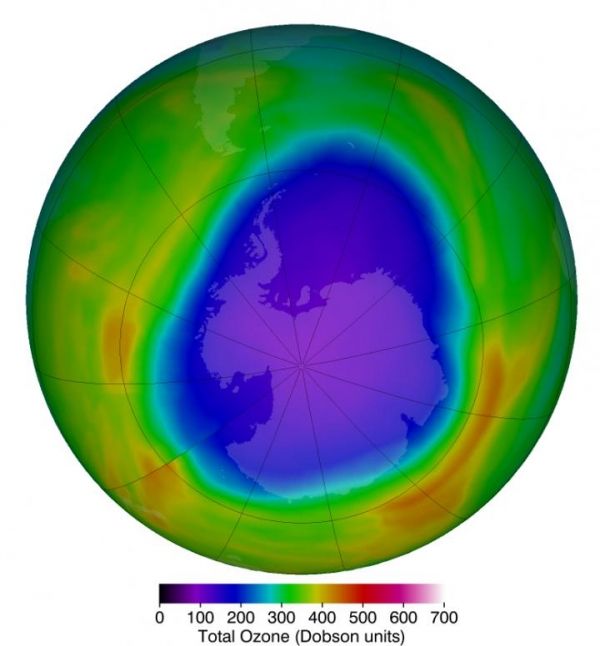Ozone levels above the Arctic reached a record low for March, NASA researchers report. An analysis of satellite observations show that ozone levels reached their lowest point on March 12 at 205 Dobson units.
While such low levels are rare, they are not unprecedented. Similar low ozone levels occurred in the upper atmosphere, or stratosphere, in 1997 and 2011. In comparison, the lowest March ozone value observed in the Arctic is usually around 240 Dobson units.
“This year’s low Arctic ozone happens about once per decade,” said Paul Newman, chief scientist for Earth Sciences at NASA's Goddard Space Flight Center in Greenbelt, Maryland. “For the overall health of the ozone layer, this is concerning since Arctic ozone levels are typically high during March and April.”
Ozone is a highly reactive molecule comprised of three oxygen atoms that occurs naturally in small amounts. The stratospheric ozone layer, roughly 7 to 25 miles above Earth’s surface, is a sunscreen, absorbing harmful ultraviolet radiation that can damage plants and animals and affecting people by causing cataracts, skin cancer and suppressed immune systems.
Read more at NASA/Goddard Space Flight Center
Image: The Antarctic ozone hole that occurs annually in September and October during the Southern Hemisphere spring typically sees much lower ozone levels in than the Arctic. The purples and deep blues show the extent of low ozone levels on Oct. 12, 2018, when they dropped to 104 Dobson units. (Credit: NASA's Goddard Space Flight Center)


